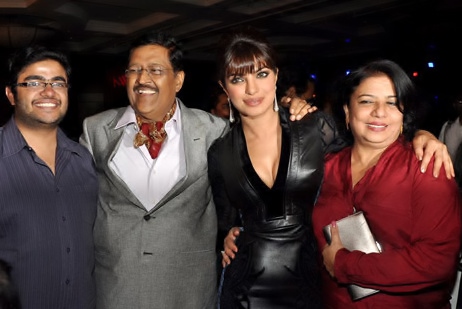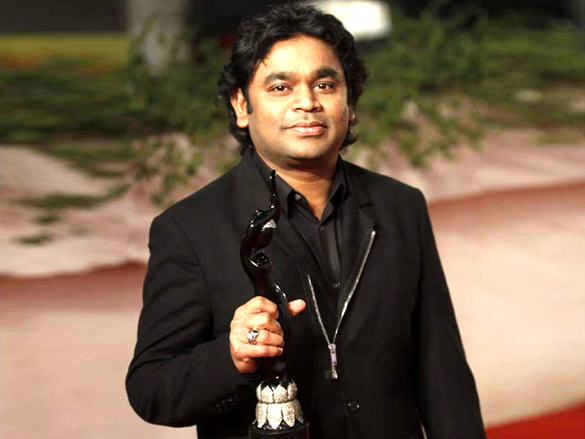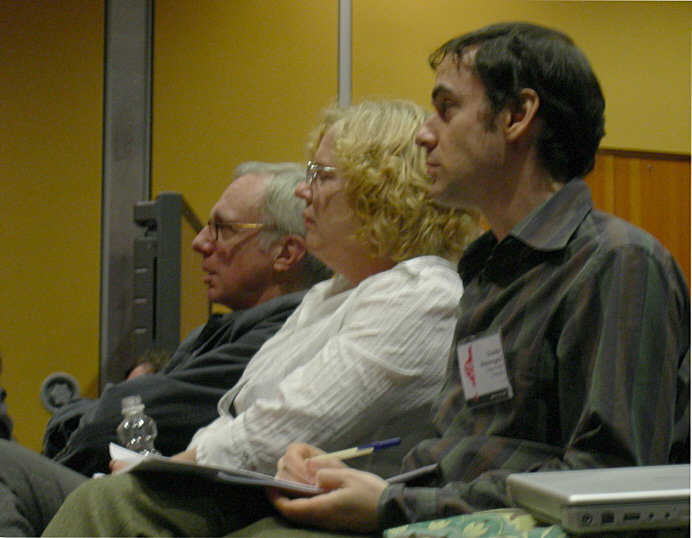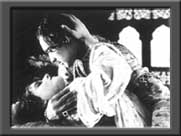|
Bajirao Mastani (soundtrack)
''Bajirao Mastani'' is the soundtrack album, composed by Sanjay Leela Bhansali with assistance by Shreyas Puranik & Devrath to the 2015 Hindi film of the same name. The film stars Ranveer Singh, Deepika Padukone and Priyanka Chopra in lead roles. The album, originally recorded in Hindi features nine songs, and was released on 31 October 2015 by Eros Music. The original score of the film is composed by Sanchit Balhara. The music in the film is situational and narrative in nature. The songs were conceived progressively with the development of film script that was completed in twelve years. Bhansali was inspired by the music of ''Mughal-e-Azam'' to compose the film soundtrack. The songs cover genres of Marathi folk, Sufi, lavani, qawwali and Indian classical apart from fusion of different ragas in single tracks. Upon release, music critics anticipated in positive that the tunes will match visuals, justifying lyrical interpretations. Critics noted the album as semi-classic ... [...More Info...] [...Related Items...] OR: [Wikipedia] [Google] [Baidu] |
Soundtrack
A soundtrack is recorded music accompanying and synchronised to the images of a motion picture, drama, book, television program, radio program, or video game; a commercially released soundtrack album of music as featured in the soundtrack of a film, video, or television presentation; or the physical area of a film that contains the synchronised recorded sound. In movie industry terminology usage, a sound track is an audio recording created or used in film production or post-production. Initially, the dialogue, sound effects, and music in a film each has its own separate track (''dialogue track'', ''sound effects track'', and '' music track''), and these are mixed together to make what is called the ''composite track,'' which is heard in the film. A ''dubbing track'' is often later created when films are dubbed into another language. This is also known as an M&E (music and effects) track. M&E tracks contain all sound elements minus dialogue, which is then supplied by the f ... [...More Info...] [...Related Items...] OR: [Wikipedia] [Google] [Baidu] |
Priyanka Chopra
Priyanka Chopra Jonas (; ; born 18 July 1982) is an Indian actress and producer. The winner of the Miss World 2000 pageant, Chopra is one of India's highest-paid actresses and has received numerous accolades, including two National Film Award and five Filmfare Awards. In 2016, the Government of India honoured her with the Padma Shri, and ''Time'' named her one of the 100 most influential people in the world. In the next two years, ''Forbes'' listed her among the World's 100 Most Powerful Women, and in 2022, she was named in the BBC 100 Women list. Chopra accepted offers to join the Indian film industry following her pageant wins. Her acting debut came in the Tamil film ''Thamizhan'' (2002), followed by her first Bollywood feature in '' The Hero: Love Story of a Spy'' (2003). She played the leading lady in the box-office hits ''Andaaz'' (2003) and ''Mujhse Shaadi Karogi'' (2004) and had her breakout role in the 2004 romantic thriller ''Aitraaz''. Chopra established herself w ... [...More Info...] [...Related Items...] OR: [Wikipedia] [Google] [Baidu] |
Shreya Ghoshal
Shreya Ghoshal (born 12 March 1984) is an Indian singer and television personality. One of the highest-paid and most well-established playback singers of Indian cinema, she has received four National Film Awards, four Kerala State Film Awards, two Tamil Nadu State Film Awards, two BFJA Awards, seven Filmfare Awards and ten Filmfare Awards South. She has recorded songs for films and albums in various Indian languages and has established herself as one of the leading playback singers of Indian cinema. Ghoshal began learning music at the age of four. At the age of six, she started her formal training in classical music. When she reached sixteen, she was noticed by filmmaker Sanjay Leela Bhansali's mother after she won the television singing reality show ''Sa Re Ga Ma''. Following the success, she made her Bollywood playback singing debut with Bhansali's romantic drama ''Devdas'' (2002) for which she received a National Film Award, a Filmfare Award for Best Female Playback Singe ... [...More Info...] [...Related Items...] OR: [Wikipedia] [Google] [Baidu] |
Filmfare Award For Best Music Director
The Filmfare Best Music Album Award is given by the '' Filmfare'' magazine as part of its annual Filmfare Awards for Hindi films, to the best composer/arranger of a soundtrack. This category was first presented in 1954. Naushad Ali was the first recipient of this award for his song "Tu Ganga Ki Mauj" from the film ''Baiju Bawra''. For the first two years, it was awarded to the composer for a particular song and not the entire album. From 1956 onwards, awards in this category have been given for the entire soundtrack. From 2017, the name of this was category changed from best music direction to music album. Superlatives * A. R. Rahman leads the winners with 10 awards, followed by the music director duo of Shankar–Jaikishan, who have 9. Laxmikant Pyarelal have the most nominations with 25, followed by Shankar–Jaikishan with 20, and R. D. Burman with 17. * Shankar–Jaikishan holds the record for the highest number of consecutive-year nominations (9), having been nominated ... [...More Info...] [...Related Items...] OR: [Wikipedia] [Google] [Baidu] |
Music Critics
Music journalism (or music criticism) is media criticism and reporting about music topics, including popular music, classical music, and traditional music. Journalists began writing about music in the eighteenth century, providing commentary on what is now regarded as classical music. In the 1960s, music journalism began more prominently covering popular music like rock and pop after the breakthrough of The Beatles. With the rise of the internet in the 2000s, music criticism developed an increasingly large online presence with music bloggers, aspiring music critics, and established critics supplementing print media online. Music journalism today includes reviews of songs, albums and live concerts, profiles of recording artists, and reporting of artist news and music events. Origins in classical music criticism Music journalism has its roots in classical music criticism, which has traditionally comprised the study, discussion, evaluation, and interpretation of music that has be ... [...More Info...] [...Related Items...] OR: [Wikipedia] [Google] [Baidu] |
Raga
A ''raga'' or ''raag'' (; also ''raaga'' or ''ragam''; ) is a melodic framework for improvisation in Indian classical music akin to a musical mode, melodic mode. The ''rāga'' is a unique and central feature of the classical Indian music tradition, and as a result has no direct translation to concepts in classical European music. Each ''rāga'' is an array of melodic structures with musical motifs, considered in the Indian tradition to have the ability to "colour the mind" and affect the emotions of the audience. Each ''rāga'' provides the musician with a musical framework within which to improvise. Improvisation by the musician involves creating sequences of notes allowed by the ''rāga'' in keeping with rules specific to the ''rāga''. ''Rāga''s range from small ''rāga''s like Bahar (raga), Bahar and Shahana that are not much more than songs to big ''rāga''s like Malkauns, Darbari and Yaman (raga), Yaman, which have great scope for improvisation and for which performances ... [...More Info...] [...Related Items...] OR: [Wikipedia] [Google] [Baidu] |
Indian Classical Music
Indian classical music is the classical music of the Indian subcontinent. It has two major traditions: the North Indian classical music known as '' Hindustani'' and the South Indian expression known as '' Carnatic''. These traditions were not distinct until about the 15th century. During the period of Mughal rule of the Indian subcontinent, the traditions separated and evolved into distinct forms. Hindustani music emphasizes improvisation and exploration of all aspects of a raga, while Carnatic performances tend to be short composition-based. However, the two systems continue to have more common features than differences. The roots of the classical music of India are found in the Vedic literature of Hinduism and the ancient ''Natyashastra'', the classic Sanskrit text on performing arts by Bharata Muni., Quote: "The tradition of Indian classical music and dance known as ''Sangeeta'' is fundamentally rooted in the sonic and musical dimensions of the Vedas (Sama veda), Upanisha ... [...More Info...] [...Related Items...] OR: [Wikipedia] [Google] [Baidu] |
Qawwali
Qawwali ( Punjabi: (Shahmukhi), (Gurmukhi); Urdu: (Nasta'liq); Hindi: क़व्वाली (Devanagari); Bengali: কাওয়ালি (Bengali)) is a form of Sufi Islamic devotional singing, originating from the Indian subcontinent. It is popular mostly in the Punjab and Sindh regions of Pakistan; in Hyderabad, Delhi and other parts of India, especially North India; as well as the Dhaka and Chittagong Divisions of Bangladesh. Originally performed at Sufi shrines or dargahs throughout South Asia, it gained mainstream popularity and an international audience in late 20th century. Qawwali music received international exposure through the work of Nusrat Fateh Ali Khan, Aziz Mian and Sabri Brothers largely due to several releases on the Real World label, followed by live appearances at WOMAD festivals. Other famous Qawwali singers include Fareed Ayyaz & Abu Muhammad, Rahat Fateh Ali Khan, Badar Miandad, Rizwan & Moazzam Duo, Qutbi Brothers, the late Amjad Sabri, Wad ... [...More Info...] [...Related Items...] OR: [Wikipedia] [Google] [Baidu] |
Lavani
Lavani () is a genre of music popular in Maharashtra, India. Lavani is a combination of traditional song and dance, which particularly performed to the beats of ''Dholki'', a percussion instrument. Lavani is noted for its powerful rhythm. Lavani has contributed substantially to the development of Marathi folk theatre. In Maharashtra and southern Madhya Pradesh it is performed by the female performers wearing nine-yard long sarees. The songs are sung in a quick tempo. Etymology According to a tradition, the word Lavani is derived from the word '''lavanya which means 'beauty'. Origin Lavani dance originated from Maharashtra in 18th and 19th century. Lavani dancers were patronised by Maratha Lords and Kings. Lavani dance was generally performed by Dhangars or Shepherd living in the Solapur, Maharashtra. History and genres Traditionally, this genre of folk dance deals with different and varied subject matters such as society, religion and politics. The songs in 'Lavani' are m ... [...More Info...] [...Related Items...] OR: [Wikipedia] [Google] [Baidu] |
Sufi Music
Sufi music refers to the devotional music of the Sufis, inspired by the works of Sufi poets like Rumi, Hafiz, Bulleh Shah, Amir Khusrow, and Khwaja Ghulam Farid. Qawwali is the best-known form of Sufi music and is most commonly found in the Sufi culture in South Asia. However, music is also central to the Sema ceremony of the whirling dervishes, which is set to a form of music called Ayin, a vocal and instrumental piece featuring Turkish classical instruments such as the ney (a reed flute). The West African gnawa is another form, and Sufis from Indonesia to Afghanistan to Morocco have made music central to their practices. Some of the Sufi orders have taken an approach more akin to puritan forms of Islam, declaring music to be unhelpful to the Sufi way. Sufi love songs are often performed as ghazals and Kafi, a solo genre accompanied by percussion and harmonium, using a repertoire of songs by Sufi poets. Musicians Abida Parveen, a Pakistani Sufi singer is one of the ... [...More Info...] [...Related Items...] OR: [Wikipedia] [Google] [Baidu] |
Mughal-e-Azam
''Mughal-e-Azam'' () is a 1960 Indian epic historical drama film produced and directed by K. Asif. Starring Prithviraj Kapoor, Dilip Kumar, Madhubala, and Durga Khote, it follows the love affair between Mughal Prince Salim (who went on to become Emperor Jahangir) and Anarkali, a court dancer. Salim's father, Emperor Akbar, disapproves of the relationship, which leads to a war between father and son. The development of ''Mughal-e-Azam'' began in 1944, when Asif read a 1922 play called ''Anarkali,'' by the playwright Imtiaz Ali Taj, which is set in the reign of Emperor Akbar (1556–1605). Production was plagued by delays and financial uncertainty. Before its principal photography began in the early 1950s, the project had lost a financier and undergone a complete change of cast. ''Mughal-e-Azam'' cost more to produce than any previous Indian motion picture; the budget for a single song sequence exceeded that typical for an entire film of the period. The soundtrack, insp ... [...More Info...] [...Related Items...] OR: [Wikipedia] [Google] [Baidu] |
Sanchit Balhara
Sanchit Balhara and Ankit Balhara are an Indian film score composer duo. Sanchit Balhara started his career as a solo composer and became best known for composing the score of Sanjay Leela Bhansali's 2015 epic historical romance film, ''Bajirao Mastani''. Sanchit's elder brother, Ankit Balhara, joined him in 2018, and the duo have been composing together since '' Manikarnika: The Queen of Jhansi''. The brothers born in Rohtak, Haryana, India into a family with a music/film background. Their father Bhal Singh Balhara, is a singer, actor and filmmaker in the Haryanvi film industry. His mother Mukta Chaudhary, is a national level athlete. Sanchit studied classical music in London. He got his big break as a film score composer with Sanjay Leela Bhansali's Bajirao Mastani. His work in Bajirao Mastani was highly appreciated throughout the industry and also won him awards including IIFA, Music Mirchi, GIMA and Zee cine awards. Education Sanchit completed a Music Production & Sound ... [...More Info...] [...Related Items...] OR: [Wikipedia] [Google] [Baidu] |








